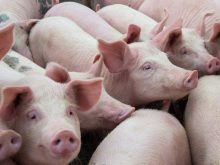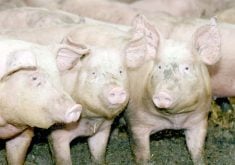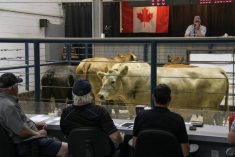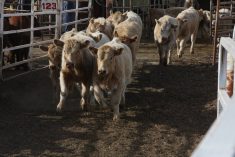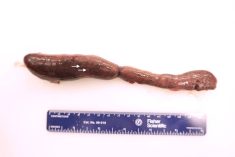Supplying the world with top end dairy genetics is the tradition at Rocky Mountain Holsteins.
Holstein bidders from around the world crowded into a sales tent or joined via the internet to bid on highly rated females from across Canada at the Rocky Mountain High sale held July 2 at the farm west of Calgary.
The sale offered 123 live animals to average $9,526 and 26 embryo lots offering 127 embryos. They sold for an average of $1,464 per embryo.
The top selling female brought $140,000 for a half interest. Named Gillette Shottle 2nd List, it was consigned by La Ferme Gillette of Embrun, Ont., and sold to Hank Veenhuis of Winterburg Holsteins of Upper Stewiacke, N.S.
Read Also
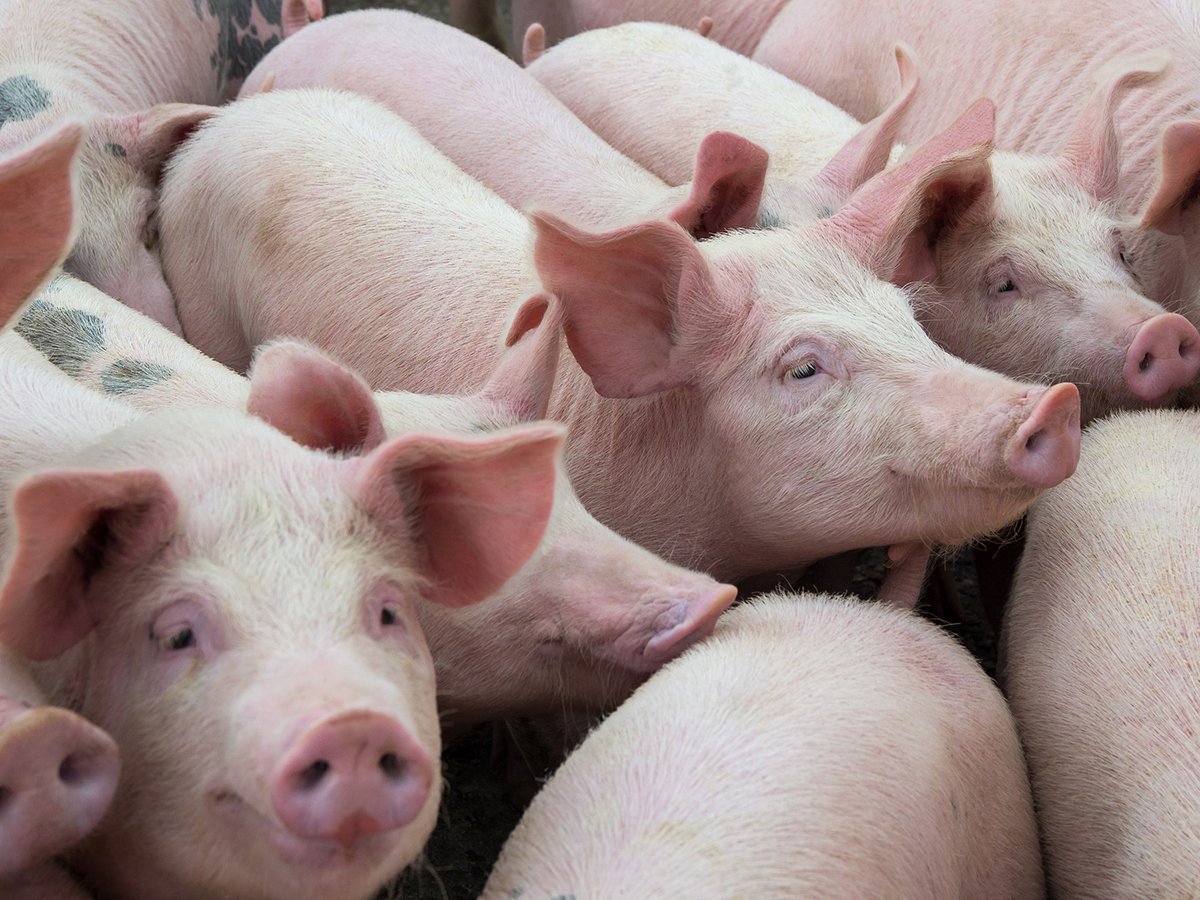
Quebec pork company calls for transparency around gene-edited pigs
Quebec-based pork company duBreton is calling for transparency around meats from gene-edited pigs on concerns that a lack of mandatory labelling will confuse consumers, and dilute certification claims. The organic sector is also calling for labelling rules.
The next highest seller came from Ferme Fleury of Victoriaville, Que., and Yvon Chabot of Cormdale Exports Ltd. Fleury Gen Baxter Lisa sold for $61,000 to Rocky Mountain.
The high selling embryo lot of five embryos went for $7,100 each to KK Dreamland owned by Thomas Koenen of Loxstedt, Germany. The consignor was Maple Wood and O’Connors Cattle Company in Ontario.
The second highest selling lot offered 10 embryos at $3,700 each to KK Dreamland, Rocky Mountain Holsteins and Crackholm Holsteins of Richmond. Que.
As a supplier of high end breeding stock, Rocky Mountain is using bovine genomic sequencing to offer more predictability and improvements throughout the Holstein industry. It is working with Genomic Research in Canada to test its breeding stock with results expected in August.
The dairy industry thrives on record keeping and working at the molecular level provides another assessment tool, said Doug Blair, one of three partners at Rocky Mountain. His partners are David Chalack and Glenn Hockley.
In the past, the industry relied on the parental average, where the traits of the sire and the dam were assessed to provide a genetic index. It had a reliability factor of about 30 percent.
“With genomics, we study the DNA and it tells which genes the calf inherited,” he said during a break at the sale.
The United States Department of Agriculture and Canadian Dairy Network are the chief research bodies.
Every sire going into stud in North America gets a genomic test.
There are about 20,000 sires with a proof rating. That information is correlated so the databank is much larger, with more useful information, said Blair.
The research provides more reliable information on key traits like milk protein, fat and body conformation as well as a better assessment of herd life and daughter fertility.
“Herd life and daughter fertility are complex topics and under the old system was 22 percent reliable but now it is 54 percent,” he said.
The average cows lasts 2.7 lactations, with the better ones lasting 15 percent longer.
The dairy network has published genetic evaluations for about 80 different traits in each of the seven dairy breeds, including production, conformation and functional traits. They are combined into a single index, the lifetime profit index (LPI), which is published for every male and female in the national database.
It includes information on the incidence of eight different diseases of dairy animals. This could lead to selecting animals that carry natural resistance.





